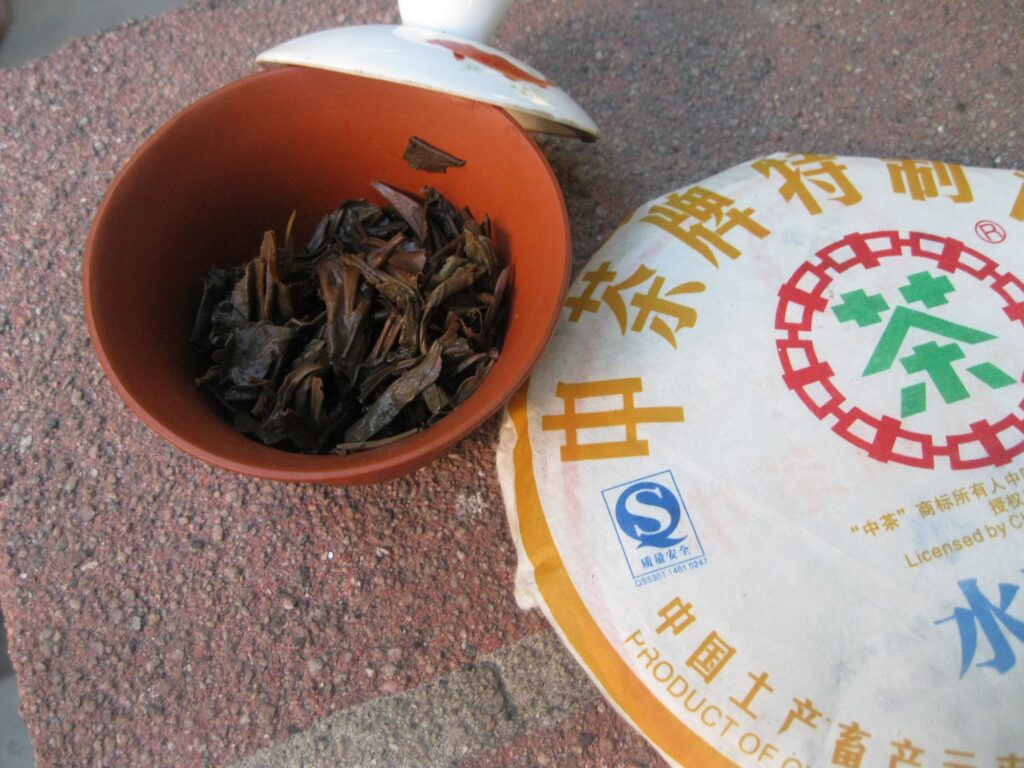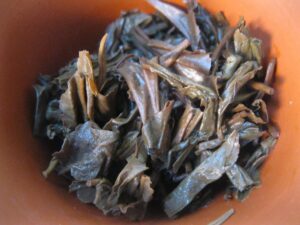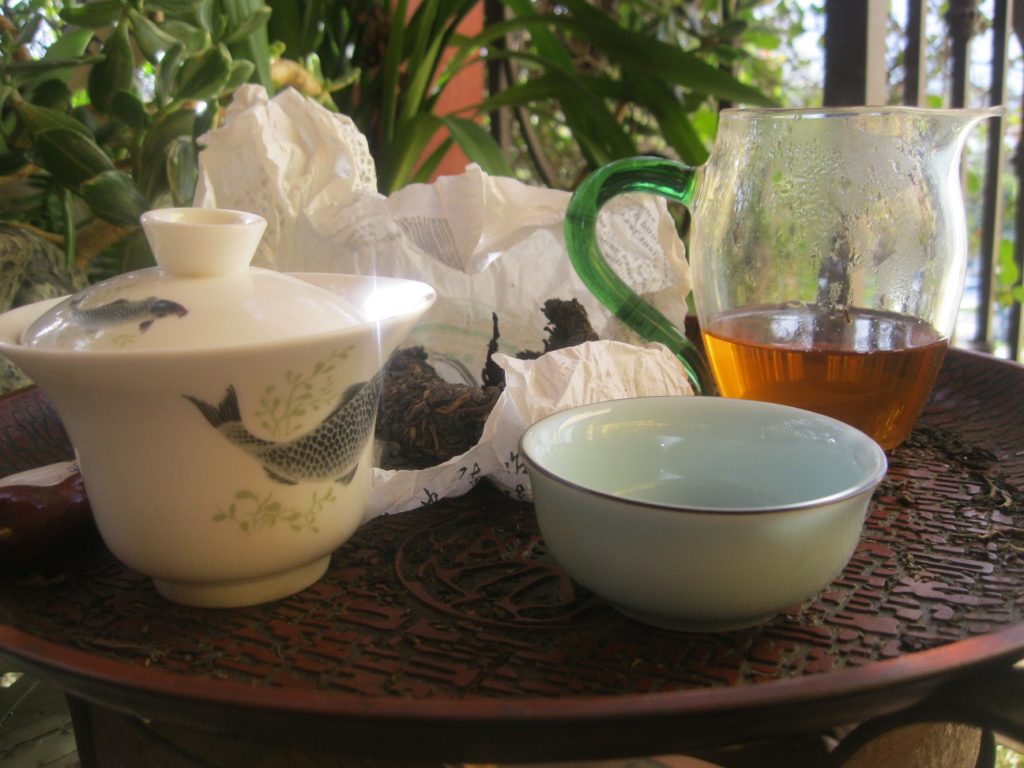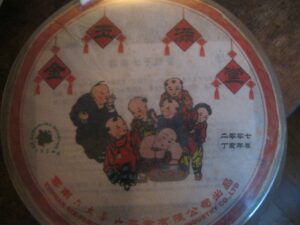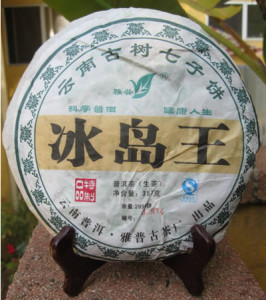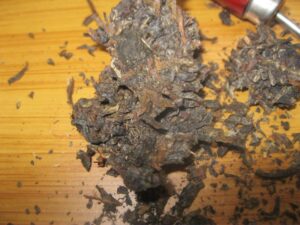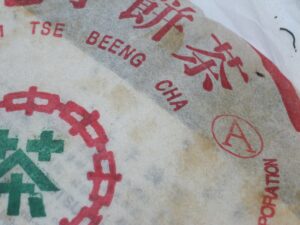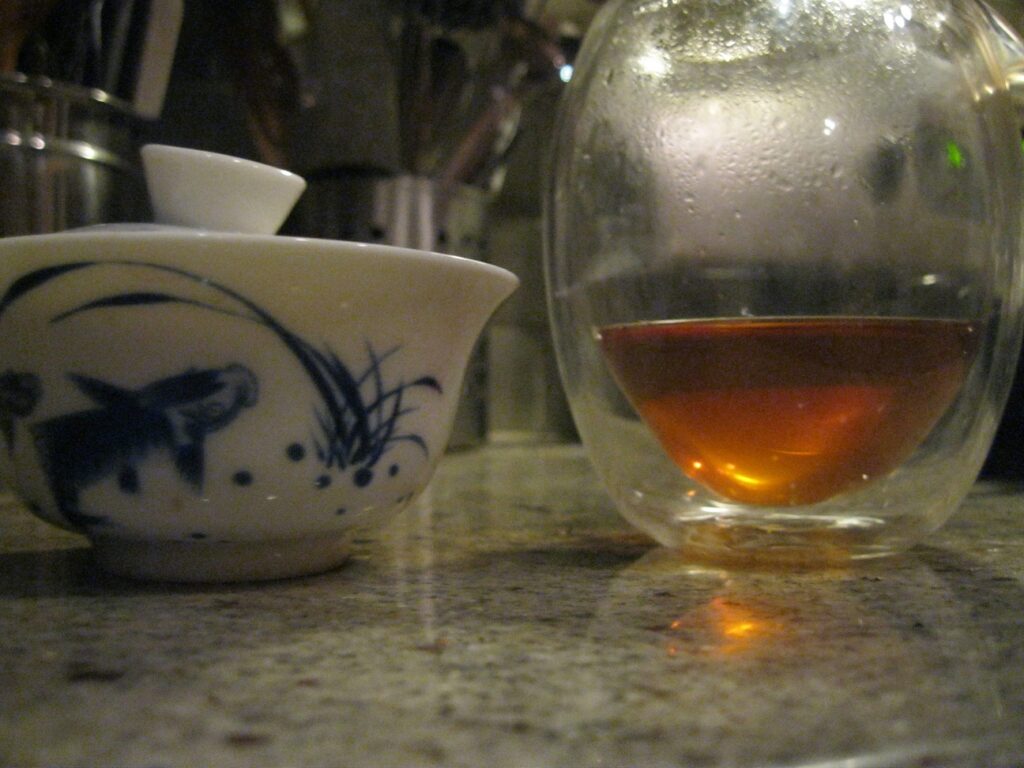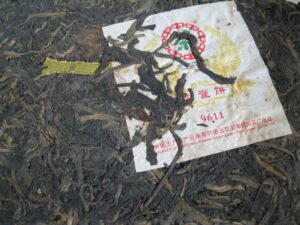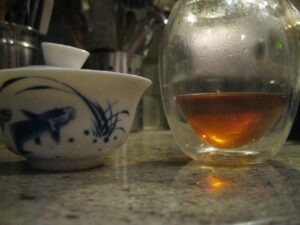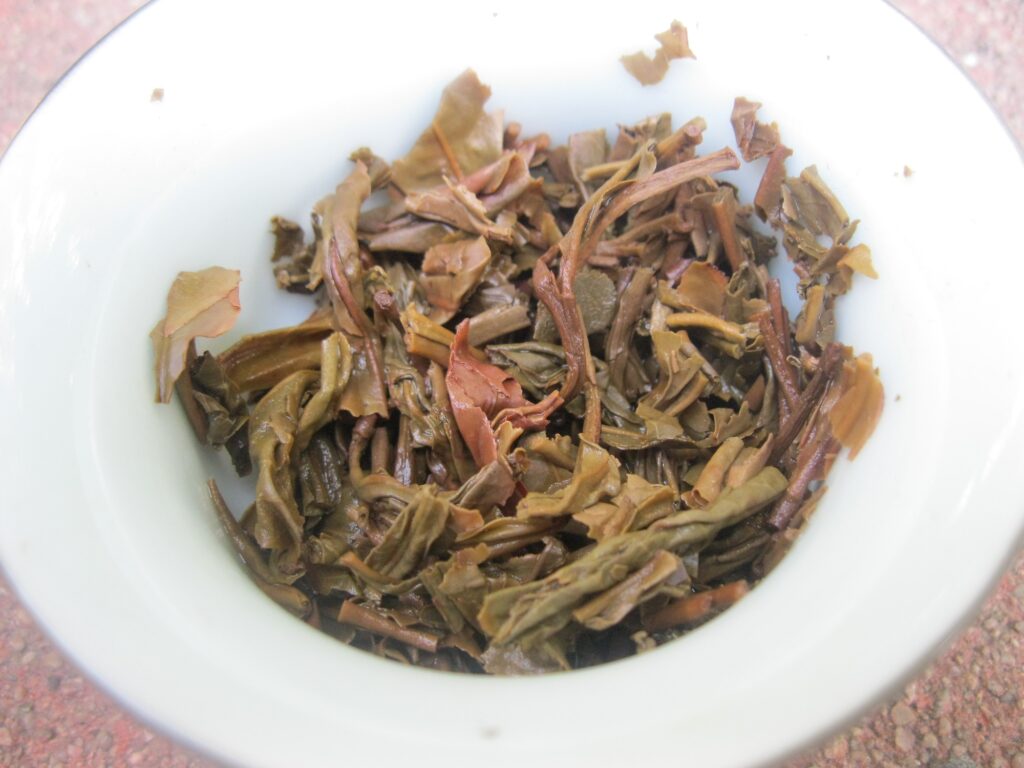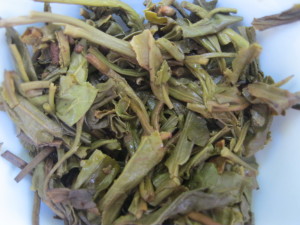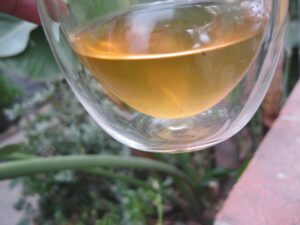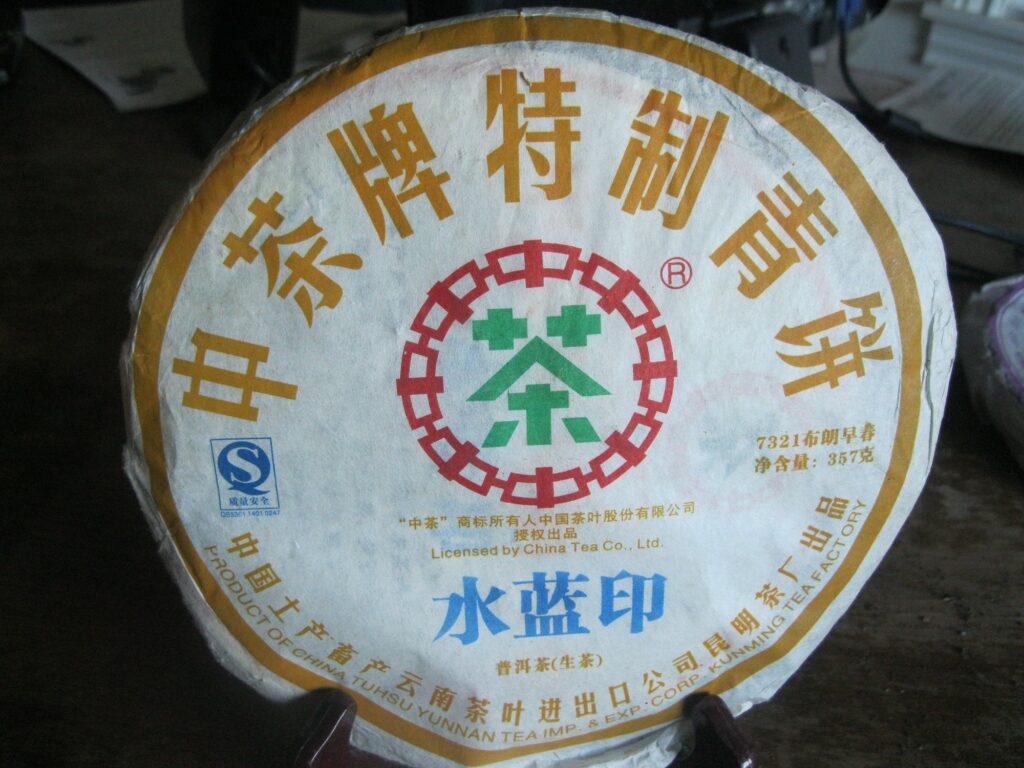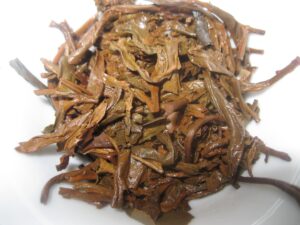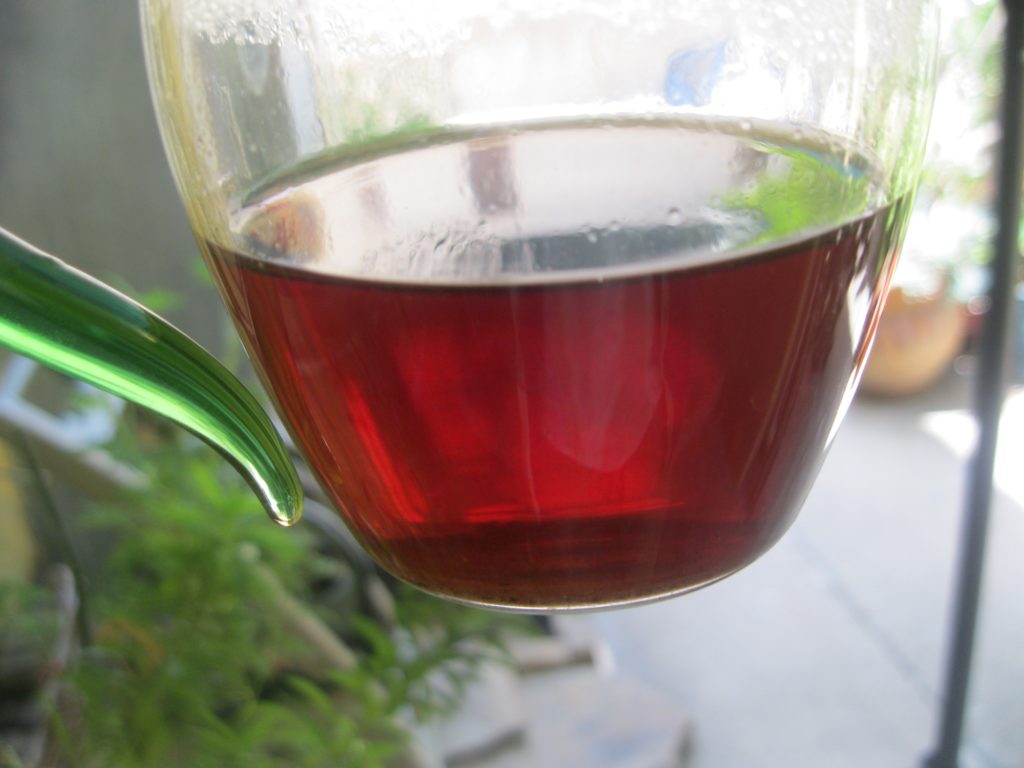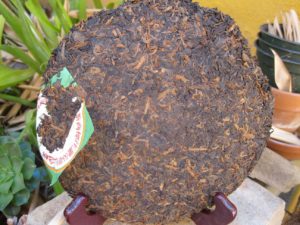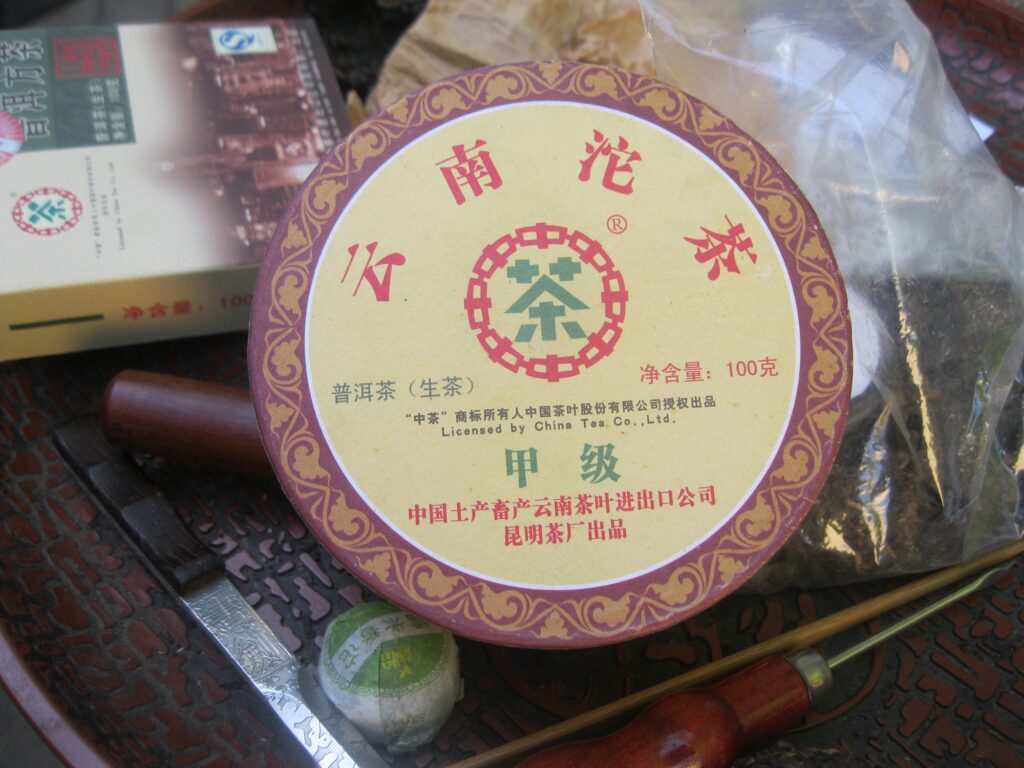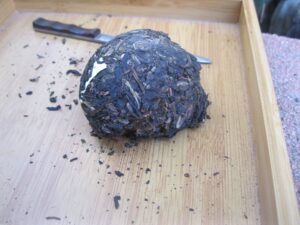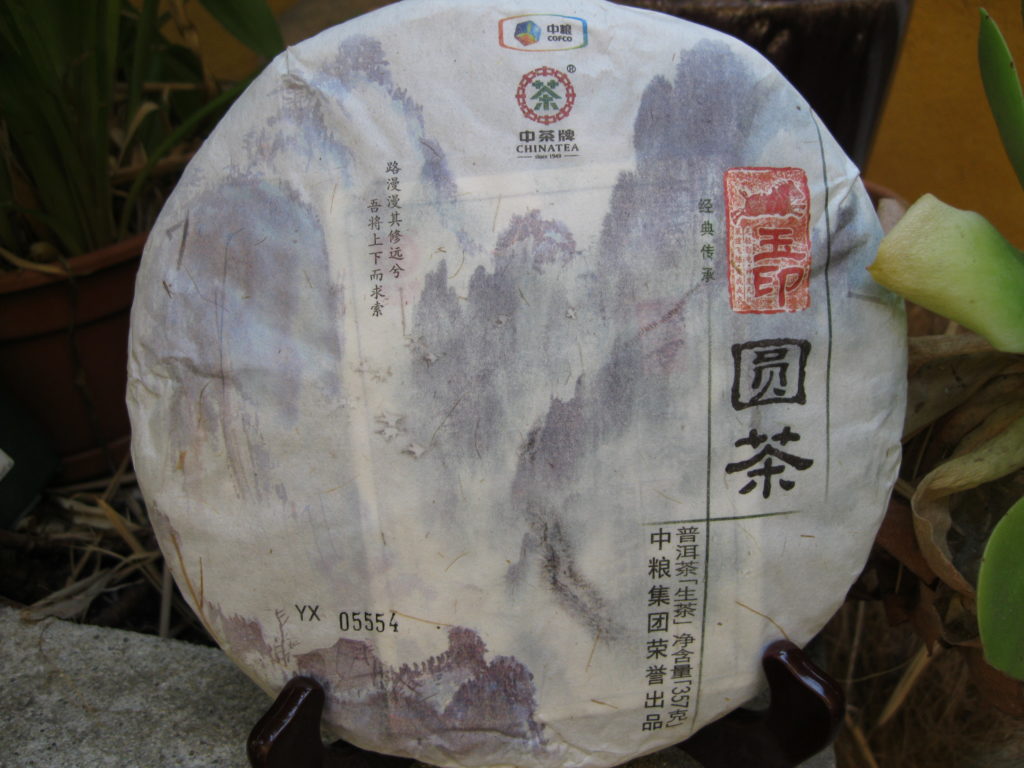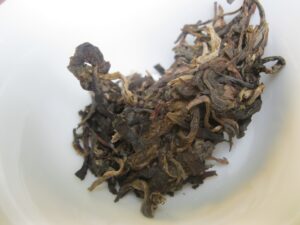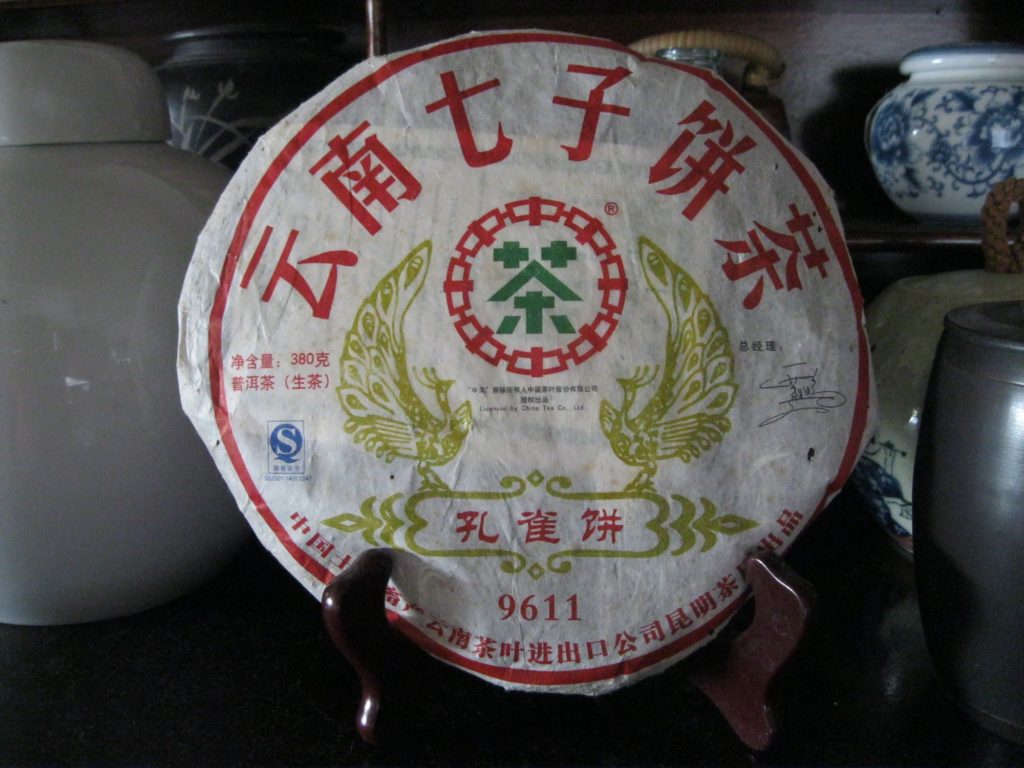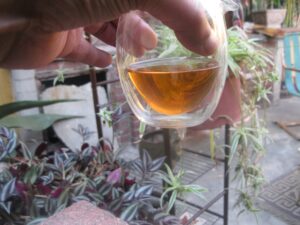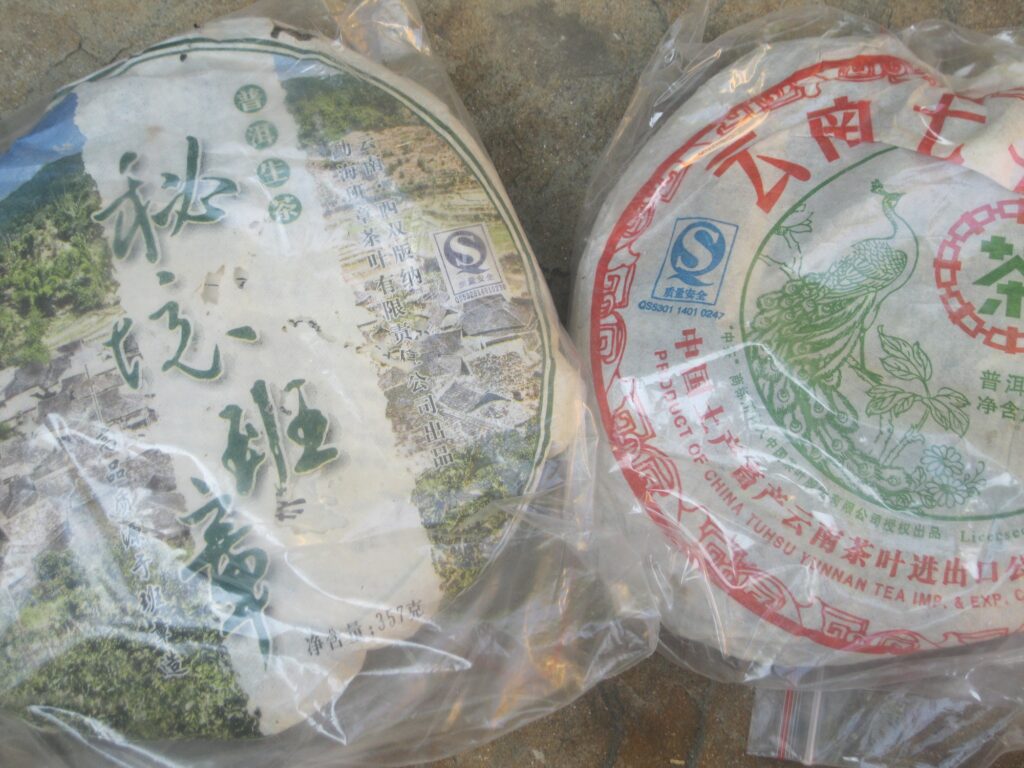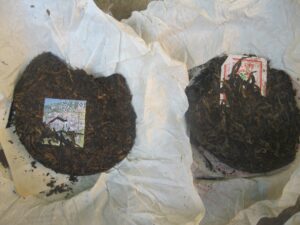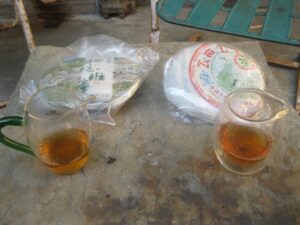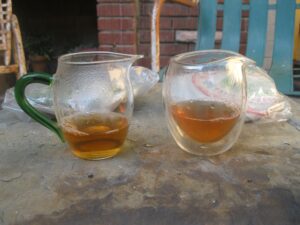Water Blue Mark: The Woolly Sweater
The Water Blue Mark is a Woolly sweater. The level of complexity with this raw puerh cake cannot be overstated. It it is reasonable to call it in the the tobacco class but it is not that simple. Tobacco class productions although darker by nature aren’t necessarily woody. There is a real woodsiness to this.
When the Water Blue Mark first posted, it was primarily aggressive and smoky. It was evident that it was strong but difficult to gain a full sense of its attributes. This brings us to the obvious fruitiness. In fact, when the Puerh Junky’s better half smelled the dry leaves she blurted out “fruity.” It is very fruity. When she smelled the wet leaves, her eyes brightened in surprise exclaiming, “plums and prunes.” Yes, it is a very fruity production, but. . .
The fruit so evident in the aroma must contend with wood and smoke. For being a 2007 production, the material is beyond its age by around three years. It resides in the low end of the scale, hanging with the bad crowd of the Puerh Junky’s collection, Joey White Tips, Mugsy Dragon, and OG Baby Face Square. Let’s put it this way, it’s as far from Zen as absolutely possible. It is very much NOT in the Zhongcha/KMTF house style.
A natural question to ask is whether the cake is coming or going. That is to ask, “Is it getting stronger or is it fading?” That is difficult to answer. The usual thing is to expect the smoke to dissipate. However, this is not overwhelmingly smoky. From the time of listing in thsummer of 2020 it has become better. The fruit note combined with the wood and smoke make it unique. An obvious association with XG’s Forever Love might be made but the Water Blue Mark is is darker and woodier. Its not just fruit and ash lie FL. In fact, there is little ash. The sense of oak aged liquors comes to mind.
Brandy? Whiskey? These are all too dry given WBM’s sweetness. Did I mention sweet? At least for the first four infusions it is very sweet and thick with a bit of frothiness thrown in. At the same time, it has a warming quality like some kind of spirit. It’s warming and surprisingly relaxing. It hangs heavy on the body like a woolen sweater, absolutely appropriate for cold winter nights, eliciting a counterintuitive power that welcomes curling up in the bed with some cozy Beethoven sonata in the background.
After the sixth infusion, it loses most of the woodiness and in contrast to Forever Love, loses all of the smoke. The production takes on a more characteristic KMTF Zen tone, sweet yet always with a hint of bitterness.

